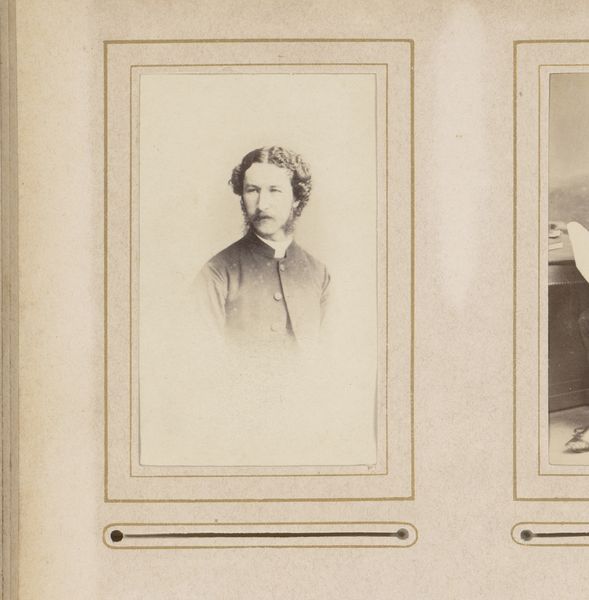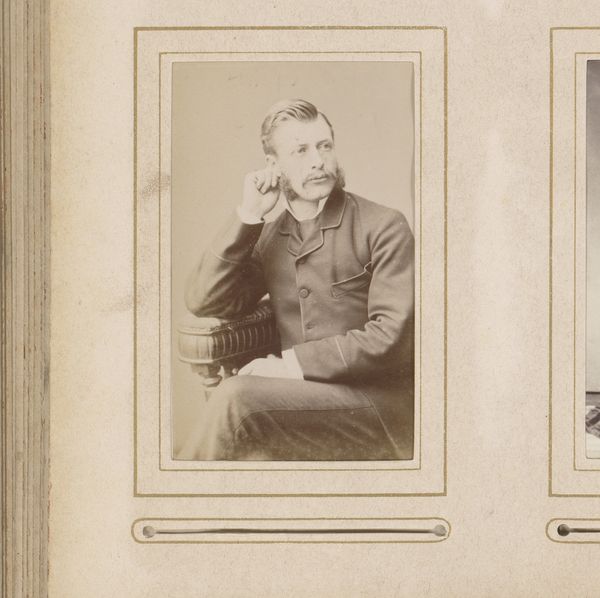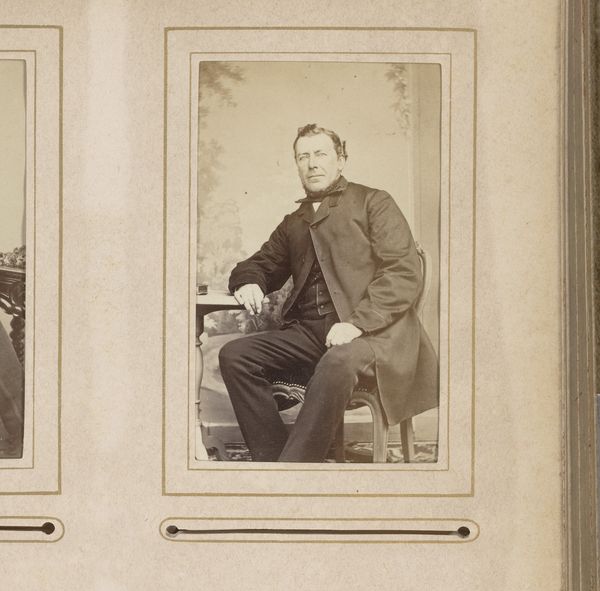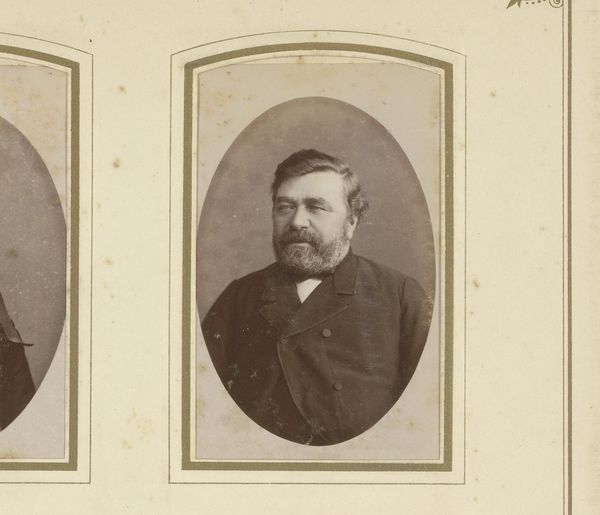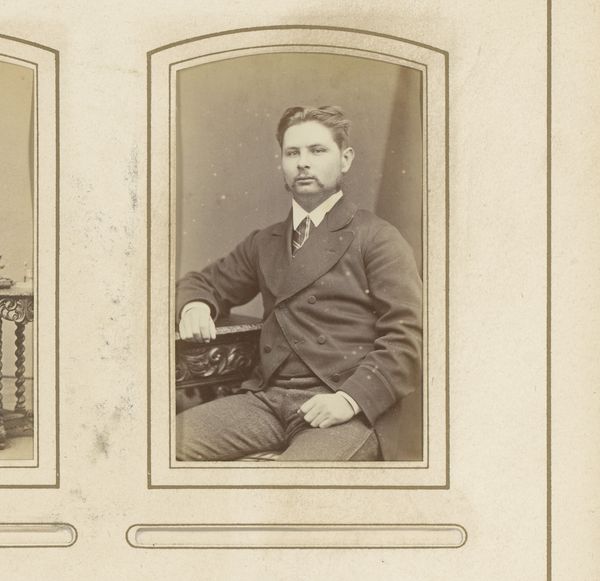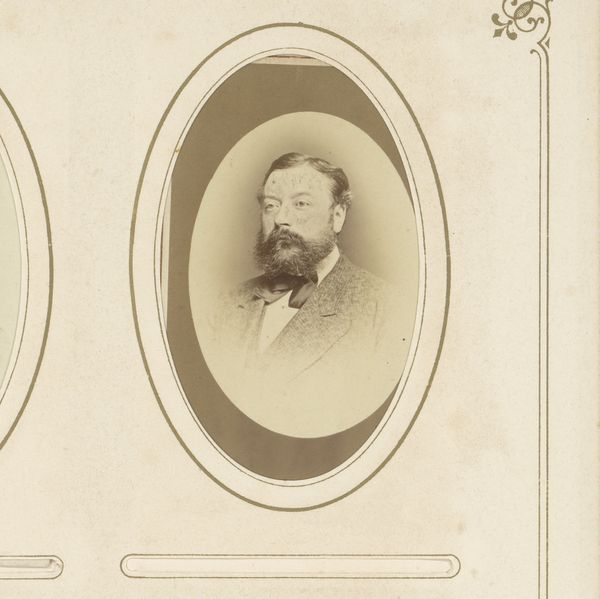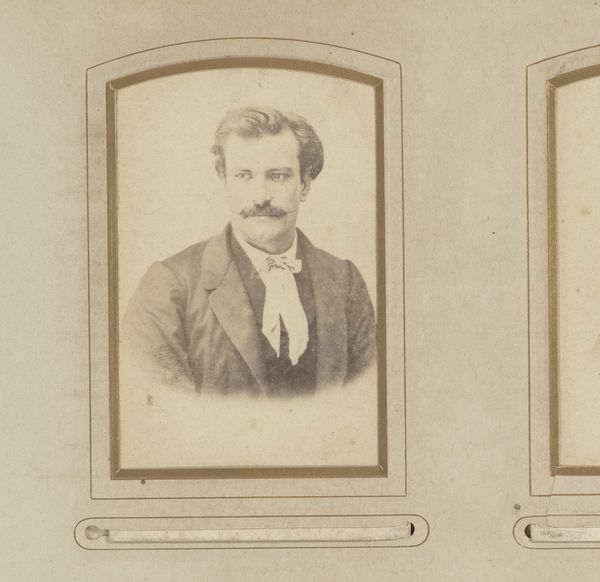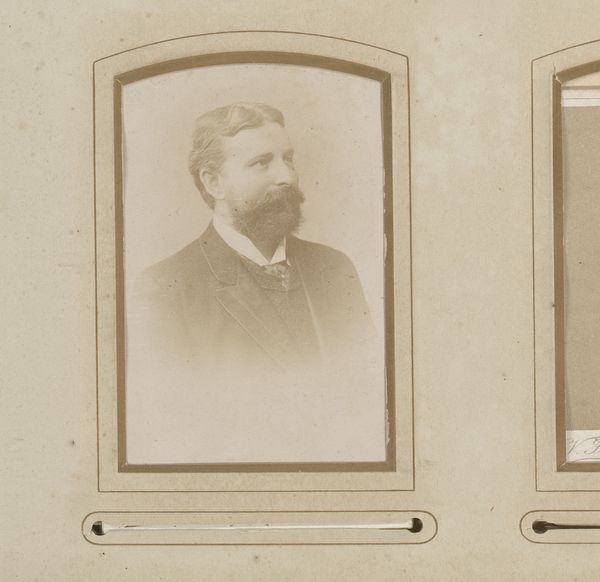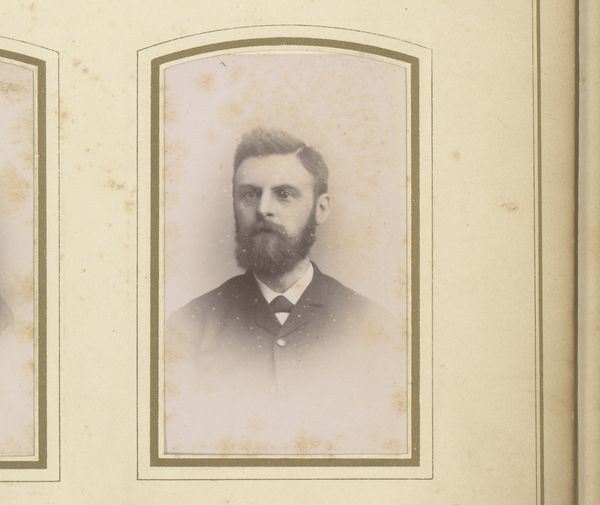
photography, gelatin-silver-print
#
photography
#
historical photography
#
gelatin-silver-print
#
19th century
#
realism
Dimensions: height 83 mm, width 50 mm
Copyright: Rijks Museum: Open Domain
Curator: This captivating piece is a photograph entitled "Portret van een man met baard" (Portrait of a Man with Beard), attributed to Fratelli Vianelli, dating back to sometime between 1860 and 1885. It's a gelatin-silver print. Editor: There's something immediately arresting about this gentleman's gaze. Even in this small oval format, the image exudes a quiet intensity. It makes me consider photography's unique claim on historical representation, doesn't it? Curator: Absolutely. And observe how the crossed arms and the ring on his finger might represent status, perhaps even wealth. The beard itself, so meticulously groomed, functions as a potent symbol of masculinity during this era. Think of how carefully constructed identity becomes when etched into light-sensitive materials! Editor: Speaking of materials, gelatin-silver prints became a dominant process because they allowed for much sharper details than earlier methods. That incredible clarity afforded a newfound accessibility and democratized portraiture, making it available beyond the elites who traditionally commissioned painted portraits. How do you think this piece engages in social practice? Curator: Indeed, but remember, despite increased accessibility, studio portraiture of this kind still carried social weight. The individual chose to present himself in a very specific way; this speaks volumes about aspiration and how identity was both performed and understood within a rapidly changing society. Editor: And thinking about it more…that jacket almost reads as tweed; those newly developed mass textile outputs were so fundamental in transforming clothing manufacture at that moment, completely re-fashioning how different classes could visibly define themselves. Even within that contained composition, so much information emerges. Curator: Fascinating how a single image can unlock layers of social and personal meaning. I see symbols of tradition; you see transformations in material culture. Editor: Exactly. Isn't that the enduring power of historical objects: that they reveal different layers in their reflection?
Comments
No comments
Be the first to comment and join the conversation on the ultimate creative platform.
